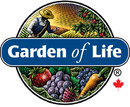Keto vs. Paleo: What’s the Difference?
The Keto and Paleo diets are two of the most popular ways to eat to improve health and manage weight. While both diets involve reducing your intake of certain foods, there are still quite a few differences between the two.
Here is a look at the pros and cons of following a keto and paleo lifestyle to help you find the right healthy eating plan for you.
What’s the Difference Between Keto and Paleo?
|
Keto |
Paleo |
| The keto diet involves putting your body into the state of ketosis, which is a metabolic state where your body breaks down fat for energy instead of carbs. On a keto diet, you’ll be focusing on eating good fats, protein and some good carbs. | The paleo diet focuses on foods that were eaten around 10,000 years ago, during the Palaeolithic era, which is why it’s sometimes referred to as the ‘caveman diet’. This means all dairy products are off limits, as well as any processed foods. |
What Can You Eat On a Keto Diet?
On a keto diet, the average person should consume:
- 70-80% fats
- 20-25% protein
- 5-10% carbohydrates
However, you need to be careful of where you’re getting your 5-10% carbs from. Some foods, such as grains and legumes should be avoided so, instead, try to get your carb intake from foods such as leafy greens or berries.
Keto-friendly foods include:
- Eggs
- Chicken
- Turkey
- Sausages
- Avocados
- Cheese
- Seafood
- Coconut oil
- Plain Greek yoghurt
- 70% dark chocolate
- Low-carb vegetables, such as kale, sprouts and asparagus
On a keto diet, you should avoid starchy foods, such as bread, pasta, rice and potatoes, as well as sugary foods, including many fruits and fruit juices.
By restricting your carb intake, your body will enter the state of ketosis and begin burning stored fats rather than carbs.

Keto Diet: Pros and Cons
Before embarking on any big lifestyle change, it’s important to do your research and bear in mind the pros and cons.
|
Keto Pros |
Keto Cons |
|
|
What Can You Eat on a Paleo Diet?
On a paleo diet, you should be eating:
- Meat
- Fish
- Eggs
- Nuts
- Fruits
- Vegetables
- Raw honey
- Coconut oil
- Avocado oil
- Olive oil
Foods to avoid on a paleo diet include processed foods, refined sugars, dairy products and starchy foods.

Paleo Diet: Pros and Cons
|
Paleo Pros |
Paleo Cons |
|
|
Keto & Paleo Supplements
It can be tough, on both diets, to have the time and energy to add all the fats and proteins you need in your day. Here are some great additions you can make to your eating plan that are easy, clean and both Certified Keto and Paleo!
 |
 |
 |
 |
 |







